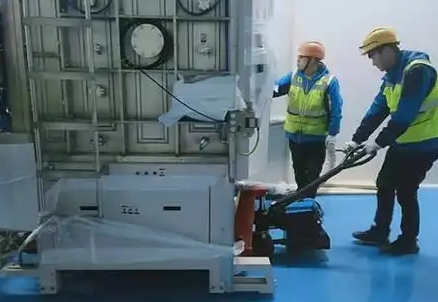News Details
Precautions for using electric forklifts in precision equipment handling
Electric forklifts play a crucial role in the handling of precision equipment. However, the handling process requires strict adherence to a series of precautions to ensure the safety and integrity of the equipment.
Firstly, before starting the operation, the operator must conduct a comprehensive and meticulous inspection of the electric forklift. The inspection includes checking whether the tire pressure is normal, whether the brake system is sensitive and reliable, whether the fork is deformed or damaged, and whether various instruments display normally. Only by ensuring that the forklift is in good working condition can the handling task be carried out.
When transporting precision equipment, the adjustment of forks is crucial. According to the size, shape, and weight distribution of the equipment, the distance between the forks should be accurately adjusted so that they can firmly support the equipment and prevent it from shaking or slipping during transportation. When forking equipment, the action should be slow and steady to avoid damage to precision equipment caused by impact force due to rapid operation.

During the transportation process, the driving speed of the electric forklift must be strictly controlled. It is strictly prohibited to drive at excessive speed. Keep moving at a low speed and uniform speed, especially when turning, passing through bumpy roads, or approaching personnel work areas. Slow down the speed to prevent equipment displacement or even falling due to inertia or bumps. At the same time, it is important to always pay attention to the load situation of the forklift and avoid overloading during handling. Precision equipment often has strict requirements for handling conditions, and overloading may lead to serious consequences such as forklift loss of control or equipment damage.
Operators should maintain a high level of attention and focus, closely observing the surrounding environment. Pay attention to maintaining a safe distance from other handling equipment, personnel, and obstacles to avoid collision accidents. When placing precision equipment in the designated location, be careful and handle with care to ensure that the equipment is placed smoothly and avoid damage to internal precision components or loss of accuracy due to improper placement.
The use of electric forklifts in the handling of precision equipment requires strict adherence to various precautions in order to safely and efficiently complete the handling tasks, ensuring the integrity and subsequent performance of the precision equipment.

